Our blog was created to help make the world of wine and beer easier to understand and fun to navigate. There are a million things to know in this industry, we just want to help you understand the latest news and trends from around the globe. So sit back with your favorite sip and let's go on an adventure.
Cider Savvy
Fall swept into town pretty suddenly. One moment we were wearing t-shirts and shorts on Walla Walla’s scorching patios, trying in vain to eat our way through the midseason Sun Gold glut, the next we were pulling forgotten sweaters out of wool-scented closets and trying to remember how to eat a spaghetti squash. Grape harvest pulled its signature “objects in mirror may be closer than they appear” trick, and a leisurely August rapidly shifted into a frantic September. We’ve had a lot of purple hands in the shop lately.
In our industry, “harvest” will always mean grapes, but the valley has many other harvests: the rush of springtime green during asparagus season, wheat harvest with its dusty sunsets, sweet onions by the smelly 40 pound sack, the Art Deco alien landscaping of Hayshaker’s radicchio. And apples! So many apples! Before grapes, this valley was filled with orchards; in fact, many of the best vineyards in Walla Walla, especially in the Rocks District, are planted on former orchard land.
Apples and wine grapes have a number of things in common. Current research suggests that they both originated near the Caspian Sea. They are both woody perennial plants that require years of growth before they begin fruiting, but once established they can last for decades or centuries. And, most importantly for us at the Thief, humans have been transforming their fruit into fermented beverages for thousands of years. Cider is to apples what wine is to grapes (freshly pressed, unfiltered, unfermented apple juice is often referred to as cider, but when I use the term, I mean the alcoholic product).
“Now, wait a minute. I’ve had cider before. It came in a can, it tasted like sweet apple soda, and it gave me a tremendous headache. Pretty sure there was a woodchuck or a mongoose or something on the label. That wasn’t anything like wine.” Here I have to differentiate between two fundamentally different products that unfortunately are both called “cider”. In the interest of pedagogical clarity, and at the risk of sounding like a complete snob, I’m going to refer to the previously mentioned sweet, six-packed product as “industrial cider”, and the more wine-like, artisanal, often 500-750ml packaged cider as “fine cider”.
Let’s look at the way most industrial cider is produced, starting with the raw materials. Industrial cider is typically produced with rejected culinary fruit, the Granny Smiths and Honey Crisps etc that don’t make the cut for our grocery store shelves. These apples are grown in densely planted, resource intensive orchards, heavily watered and fertilized to maximize the yield per acre, producing big, shiny, delicious apples. Unfortunately, delicious apples do not necessarily make delicious cider, in the same way that table grapes don’t make delicious wine. Wine grapes have thick skins filled with color, flavor, and texture, as well as gnarly seeds and much less juice (water) than table grapes.
Those big, juicy apples are kept in storage with closely controlled temperature and gases that prevent further ripening, which means we can eat a delicious Fuji apple well after the harvest window. This also allows the industrial cider maker to pick and choose their production dates, turning over their tanks many times throughout the year. This turns the cider making process into a year round activity more akin to brewing beer than making wine. The juice is often watered back, fermented quickly, back sweetened, filtered, stabilized, and brought to market quickly, typically in a month or two (again, like beer).
Fine cider, on the other hand, is typically a vintage product. It is the result of one season’s harvest, picked and pressed over the course of a couple months. It is usually made from 100% fresh pressed juice (no concentrate, no water added). The orchards are often much less densely planted, sometimes with animals grazing underneath. Orchard management is much less intensive, because the physical appearance of the apples doesn’t matter.
Cider apple varieties are just as diverse as wine grape varieties, with appetizing names like Ellis Bitter and Foxwhelp. While there are some multi-purpose varieties that are good for both cider and eating/baking, there is definitely a reason that the grocery store doesn’t sell many cider varieties - most of them taste disgusting! In the industry they call them “spitters”, because one bite is all you’ll manage before you spit them out. Many cider apples have high levels of tannin or acid (or both), lending structure and ageability to the fermented product.
The fine cider maker collects their cider apples by picking up the drops as they fall naturally, or by shaking the tree. After collection, the apples are often aged for a period of weeks or months in a process called “sweating”. This ripens the apples further, converting starch into sugar, and improves the texture of the fruit. When the apples are ready, they are milled (I believe the scientific term is “mooshed”) into a thick pomace. Some producers choose to macerate their millings for hours or days in order to oxidize the pomace, release pectin, and soften the tannins.
Now it’s time to press! From modern bladder presses to antique stone and beam behemoths, cider makers have dozens of different ways to squeeze juice from apples. Once the pomace has been pressed, the cider maker is left with fresh, unfermented juice. From this point on, the cider making process is very similar to wine making. The fresh juice is siphoned off into a fermenting vessel, be it an oak barrel or stainless steel tank, and here it is transformed through the magic of fermentation into a delicious alcoholic beverage. The cider maker may decide to inoculate the cider with wine yeast, or choose to ferment using the naturally occurring yeasts in the apples and facility. It is common for fermentation to last for months, often slowing in the winter only to restart as spring brings warmer cellar temperatures. If the cider maker wants to produce an off dry style, they may choose to arrest fermentation early. This can be done through successive cold racking, or through a process called ‘keeving’ whereby the cider is naturally fined with its own pectin. This removes most of the nutrients that the yeast would need to finish fermentation.
Keeving is particularly common in the fine french ciders from Normandy and Brittany. These ciders are sparkling and intensely apple-y, with sweetness that helps to soften the grip of their bitter tannins. Their soft sweetness makes them an excellent place to begin one’s cider journey. Across the channel from Normandy, the United Kingdom produces more cider than any other country. Traditionally the ciders are dry and robustly tannic, and can be still or sparkling. Further south, Asturian and Basque ciders in Spain are less tannic and more tart, the perfect foil for sheep cheese.
You've Been Drinking Volcano Wines This Whole Time...
Every time Mount Etna erupts, a new terroir is born. When the dust settles and the vignerons return to the slopes, they discover a viticultural landscape remade by ash and molten rock. How fricking metal is that (eat your heart of Blood of Gods)?
From the dizzyingly braided trenzado vines of Tenerife in the Canary Islands to the Gamay-covered extinct volcanos of Auvergne and Beaujolais, from the bell rung Chardonnays of the Willamette Valley’s Jory soils to the fractured basalt crackling beneath Cabernet vines in our own Valley, volcanic wines make up a disproportionate percentage of the wines of the moment (apologies to Kermit Lynch, I know he’s been trying to make Corsica a thing for like decades). What self respecting wine nerd wouldn’t want to try a light bodied red wine growing out of the side of an exploding mountain?
When I think about volcanoes and their wines, I think about tension. Tension is the difference between the slow, consistent eruptions of Hawaiian shield volcanoes versus the abrupt explosion of stratovolcanoes like Mount St. Helens. Tension is the difference between a wine that makes you go “meh” and a wine that has you pouring a second glass before you’ve finished your first. Volcanic wines (Usually. Generally. Typically. Blah blah blah...) are wines of tension. Wiry without being bony or lean, dense but not lumbering, volcanic wines are popular because they are exciting. They come from exciting locations, are grown in unusual ways with unique grape varieties, and continue to intrigue when they make it into your glass.
The relative isolation of these volcanic wine regions (many of them are islands, after all) means that they are often very distinctive viticulturally. In Santorini, own-rooted Assyrtiko vines have been slowly woven into tightly wound baskets over the course of centuries. The baskets form a dainty protective layer, shielding the grape bunches from the crushing Mediterranean heat and blowing winds.
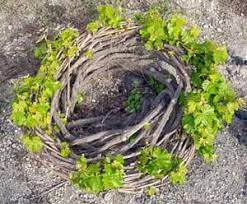
Similarly, the vineyards of Tenerife have historically been trained into long, creeping, xenomorphic cords. Like in Santorini, these vines are very, very old (up to 200-250 years old) and own-rooted, predating the introduction of phylloxera to Europe. Phylloxera seems to struggle in volcanic soil, and many of the vines in these regions are planted on their own roots (their isolation doesn’t hurt either). The grape varieties follow a familiar Spanish colonial pattern, with Palomino and Mission (known here as Listan Bianco and Listan Prieto, respectively) taking center stage alongside the autochthonous red variety Listan Nego. The whites are sea spray and almond, the reds are smoky forest berries, and you should devour them both with as many salty foods as you can handle.
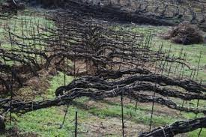
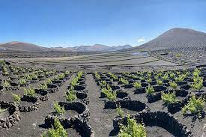 .
.
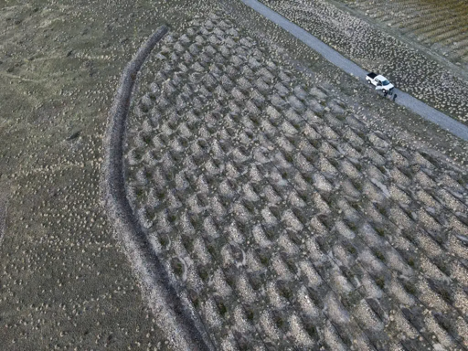
The aforementioned vines of Mount Etna are trained in the traditional alberello style, similar to a Rhone valley goblet but taller. Apologies in advance for the broken record: black volcanic soils, own-rooted vines planted to unique varieties, transparency, ageability, smoke, tension. The reds, typically Nerello Mascalese with a dollop of Nerello Cappuccio, drink like Aphrodite mixed all the leftover bottles after one of Hephaestus’s famous “Burgundy and Barolo Bashes”. The Carricante-based whites are citrus laden, saline, taut, and crisp (you ever make preserved lemons? Did you lick your fingers?), and they age spectacularly. We love these wines so much that we made an entire section for them. The entry level wines represent some of the most consistent values in Italy, and the high end stands toe to toe with the grandest cellar selections in the world.
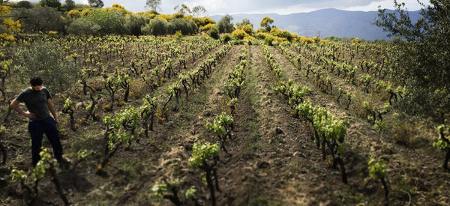
Volcanic wines are not restricted to far flung islands with twisted vineyards and difficult to pronounce grapes. The wines of Walla Walla are also volcanic! Our basalt bedrock, from the rolled cobblestones of the Rocks Distict to the fractured basalt of Sevein and the North Fork, is part of the Columbia River Basalt Group, the result of millions of years of lava flows. You’ve been drinking volcanic wines this whole time, whether you knew it or not. I’m pretty sure that makes you a wine nerd. Welcome in! Take a seat. Pour yourself a glass or two. You look tense.
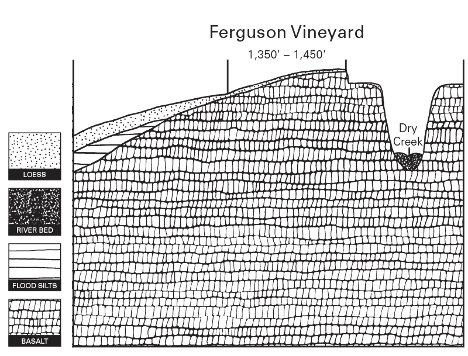
French Weekday Sipper 3-Pack, Specs & Pics


Domaine de la Chanteleuserie "Cuvée Alouettes” Bourgueil 2018
- Loire Valley
- 100% Cabernet Franc
- 40 – 50 year old vines
- Sand and clay
- Fermented and aged in stainless steel
- 2-week maceration
- Cassis, red plum, fines herbs


Piron & Lameloise Moulin a Vent 2017
- Beaujolais
- 100% Gamay noir
- Schist soil
- Hand-picked
- Partially destemmed
- Begins fermentation semi-carbonic, then frequent punching down, total of 18-20 days on skins
- Aged 50% in barrel, 50% in tank
- Wild strawberry, peony, cassia stick


Maxime-Francois Laurent “Il Fait Soif” Côtes du Rhône 2018
- Southern Rhône
- 80% Grenache, 20% Syrah
- Clay and limestone
- Biodynamic vineyard
- Native yeast fermentation
- Syrah is fermented carbonically, Grenache fermented partially whole cluster
- 10-day maceration in cement tank
- Aged 6 months in stainless steel
- Unfined, unfiltered
- Raspberry, strawberry preserves, licorice root
Discover FUSO, Italian Terroir and Workhorse Wines
SHOP FUSO TRAVEL ITALIAN TERROIR 6-PACK HERE
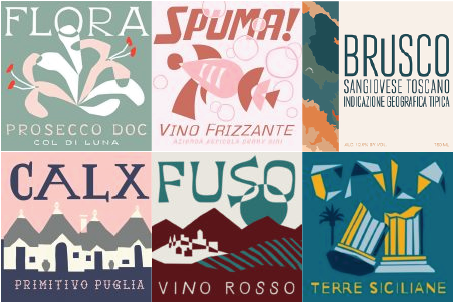
Spring is coming. Winter doldrums are being beaten back into dark cupboards, attics, and basements to hibernate until next year, and vineyards around the northern hemisphere are waking up. Dry January is a distant but surprisingly clear memory, and we are all, hopefully, drinking wine again.
Now, I love a nice bottle of Champagne to celebrate a promotion or birthday, and I enjoy savoring a bottle of Barolo that’s older than I am. Unfortunately, I’m typically working with a Prosecco or Langhe Nebbiolo budget. Lucky for me, the shop always has a ton of fantastic budget options. So, join me in raising a glass to the Tuesday night wines, the workhorse wines, the “little wines”, the three-day weekend Friday afternoon wines, the pizza and burger wines. These are the wines that got us hooked on vino in the first place.
FUSO is one of our favorite recent discoveries in the land of budget bottles. They are a company that sources wine from a wide variety of excellent growers and winemakers throughout Italy, from north in Piedmont all the way south to the island of Sicily. While they lack a regional focus, all of their wines share a consistent approach to viticulture and winemaking. Their requirements, from their website:
- Delicious and terroir-driven
- Made by farmers (not tank-farms)
- Certified organic or practicing organic wineries in conversion
- Native grapes
- Native yeasts
- Low sulphur (45 mg/l or less of added SO2)
- Unfiltered or slightly filtered
- Dry farmed
These wines are light, quaffable, chillable, sustainably grown, and the price is just right. The whole range would be awesome with a charcuterie plate featuring dry-cured salumi, castelvetrano olives, and boquerones, or any number of fancy pasta dishes. Their approachability and natural acidity also make them fantastic for tacos, cheeseburgers, frozen pizza, hamburger helper, tater tots, Thai takeout, tuna casserole, or any number of easy-button Tuesday dinners. Because even Tuesday night deserves a well-made bottle of wine, don’t you think?
Col Di Luna ‘Flora’ Prosecco Brut
- Veneto
- 100% Glera
- Limestone and clay
- In conversion to organics
- Fermented for 20 days in stainless steel
- No malolactic fermentation
- Asian pear, green apple, cut flowers
Denny Bini ‘Spuma’ Frizzante
- Emelia-Romagna
- 100% Lambrusco di Sorbara
- Sand and limestone
- Certified organic
- Double curtain training
- Native yeast fermentation with no temperature control in stainless steel for first fermentation
- Bottle fermented in the spring for 30-60 days using must from the same vintage
- Full malolactic fermentation
- Raspberry, rainier cherry, nettle
Dario Serrentino ‘Cala’ Terre Siciliane
- Sicily
- 90% Nero d’Avola, 10% Grillo
- Limestone and clay
- Certified organic
- 20-60-year-old bush vines
- Native yeast fermented with 6-day maceration in stainless steel
- Aged 6 months in stainless
- Lightly filtered
- Tart strawberry, umeboshi, coppa
Filippo Cassano ‘Calx’ Primitivo
- Puglia
- 100% Primitivo
- Limestone
- Certified organic
- 20-30-year-old vines
- Native yeast fermentation for 15 days, 7 day extended maceration in stainless steel
- Red currant, blackberry, dried and fresh fig
Tenuta Maiano 'Brusco' Sangiovese
- Tuscany
- 100% Sangiovese
- Limestone and silt
- Certified organic
- 15-year-old vines
- Native yeast fermented for 15 days in concrete
- Aged 3 months in concrete
- Lightly filtered
- Pie cherry, leather, eucalyptus
Walter Massa ‘Fuso’ Rosso
- Piedmont
- 100% Barbera
- Clay and limestone
- Practicing organic
- 10-35-year-old vines
- Native yeast fermentation for 12-20 days
- Aged in concrete
- Black plum, blueberry compote, balsamic drizzle
SHOP FUSO TRAVEL ITALIAN TERROIR 6-PACK HERE
Thoughts on Whole Cluster Fermentation & Specs About the Package Wines
Whole cluster fermentation is in, destemmers are out (good riddance, as anyone who has cleaned one will agree), and Henri Jayer is rolling in his grave. We’ve discussed the fickle nature of the wine industry on this blog before. There is always a fresh flavor of funky newness coming over the horizon, or an as yet undiscovered wine region (the enological North Sentinel Island) to be both championed and gate-kept by Magellanic sommeliers. Everyone is drinking rosé again, Cru Beaujolais and the Jura have celebrated their time in the sun, and regenerative viticulture is just now entering the cool-wine zeitgeist.
Whole cluster, though, has managed to pervade both the edgy corners of wine nerd-dom and the pillared halls of wine orthodoxy. There are even large national brands advertising whole cluster fermentation on their labels! Unfortunately, the term is not very well understood, and winemakers have confused the issue further by using several different names for the same process (whole cluster/whole bunch/partially destemmed/etc). We want the truth, the whole cluster truth, and nothing but the truth!
What do you mean by whole cluster?
In a typical red wine fermentation, grape clusters are dropped into a destemmer, which removes the stems and spits out clean purple grapes that look like blueberries. Skip this step, and you are left with full clusters of grapes still attached to the stem. These are whole clusters.
Great, we’ve got whole clusters. Now...uh… how do we make them into wine?
Oftentimes these clusters will be crushed and piled into a fermentation vessel. This crushing can be done mechanically, or through the time-honored tradition of foot-stomping (“pigeage”). This releases juice, submerging the solids, preventing microbial spoilage (also known as vinegar).
That sounds easy! Why would anyone ever use a destemmer?
Well, some varieties are not as well suited to whole cluster fermentation as others. Pinot noir, Grenache, Syrah, Mencía, and Gamay are generally regarded as good fits for whole cluster fermentation, but pyrazine-heavy reds like Cabernet and Merlot can become green and vegetal. Stemmy fermentations also require careful tannin management to prevent hard, unyielding wines. Finally, the potassium in stems (as well as any incidental carbonic maceration) causes the pH of the finished wine to rise, which can lead to instability.
Hey, you tried to sneak in a word there! Think I wouldn’t notice?!? What’s carbonic maceration?
Yeesh. Ok. Carbonic maceration is an intracellular fermentation that takes place in an anaerobic environment, usually a CO2-filled tank. Fruity esters, reminiscent of strawberry and raspberry, are produced, and the malic acid of the grapes is degraded, raising the pH. Uncrushed whole clusters are very conducive to carbonic maceration, and almost all of the classic producers of Cru Beaujolais use whole clusters and at least semi-carbonic maceration. This leads to the fruity aromas and silky textures that the region is known for.
Welp, I’m sorry I asked. Ok, I think I’m getting it. If you’re lazy and you don’t want to use the destemmer, you can use whole grape bunches in your wines. That’s whole cluster.
Well, mostly. Remember, a winemaker doesn’t have to leave his entire harvest as whole bunches. Many winemakers will choose to either destem part of a crop or fill a fermenter with alternating lasagna layers of destemmed grapes and whole clusters or destem the whole crop and then add back in some of the de-graped stalks. Domaines in Burgundy will often vary the amount of whole clusters from vintage to vintage, with a poor or rainy vintage usually getting less while a warm solar vintage gets more. It’s just another wrench in the winemaker’s toolbox.
So, whole cluster usually means not de-stemming grapes, except when it doesn’t. Got it. Very clear cut. Thanks for all your help. What do these Schrodinger wines taste like? Both wine and not wine at the same time, until you drink them?
*Oblivious to sarcasm* You’re very welcome. They taste delicious! Yes, sometimes they can be a little...ahem…stalky, but in the hands of a sensitive winemaker, stems can add lift, spice, and resinous snap. The best way to understand the impact of stems is to try two different wines, one whole cluster and one destemmed, from the same producer or region. Maybe try a rustic, spicy, whole cluster Cornas next to a suave, fudgy, destemmed Hermitage. Ask your local wine purveyor to help you pick out a wine with whole clusters and see what all the cool wine kids are excited about.
GLOBAL DRINK WINE DAY PACKAGES
Whole Cluster, Cozy Reds 3-Pack, Shop Here
Castro Candaz Tinto 2019
- Ribeira Sacra, Galicia
- Primarily Mencia, with Domingo Pérez (Trousseau), Garnacha Tintorera (Alicante Bouschet), Mouratón, Caiño and Brancellao
- Organic viticulture
- 100% whole cluster fermentation in wooden vessels
- Aged in 500l barrels and foudre
- Raspberry, red cherry, bergamot

Domaine de la Grosse Pierre Chiroubles “Claudius” 2018
- Chiroubles, Beaujolais
- 100% Gamay noir au jus blanc
- Pink granite
- 80 year old vines
- 3800 vines per acre
- 100% whole cluster, semi-carbonic maceration
- Fermented 12 days with one pump over per day, native yeasts
- Aged 11 months in concrete tank
- Unfined, unfiltered, no SO2 until bottling
- Blackberry, black cherry coulis, cracked black pepper

Eric Texier Domaine de Pergaud Vieille Serine Brézème 2014
- Brézème, Ardeche
- 100% Syrah (Serine)
- ~90 year old vines
- Limestone soils
- Organic viticulture, incorporating no-till and compost tea preparations
- 100% whole cluster fermentation with submerged cap for 5-7 days
- Aged 3 years in foudre with no racking
- No punchdowns or pumpovers
- Unfined, unfiltered, no added SO2
- 93 points John Gilman
- Cassis, smoked brisket, salt-cured olive tapenade

International Chardonnay: Winter Whites 3-Pack, Shop Here
Edi Kante Chardonnay 2016
- Venezia Giulia, Friuli
- 100% Chardonnay
- Clay and limestone
- Fermented and aged 12 months in old barrels
- Aged 6 additional months in stainless steel
- Bottled unfiltered
- Orange blossom, lemon curd, clove

Dominique Lafon Bourgogne Blanc 2018
- Burgundy, France
- 100% Chardonnay
- Clay and limestone
- Organic viticulture
- 20-50-year-old vines sourced from Meursault and Puligny-Montrachet
- Whole cluster pressed
- Fermented and aged for 12 months in old barrels, native yeasts
- Little or no battonage
- White peach, Meyer lemon, crushed chalk

Crossbarn Sonoma Coast Chardonnay 2018
- Sonoma Coast, California
- 100% Chardonnay
- Hand-harvested at night
- Whole cluster pressed
- Fermented and aged in 90% stainless steel, 10% neutral oak barrels
- Aged 5 months on the lees
- 92 points JS, 90 points WA, 90 points JD
- Sliced apple, nectarine, wildflower honey
Rhône or Bust Syrah 3-Pack, Shop Here
Patrick Jasmin “La Chevaliere” 2016
- Collines Rhodaniennes, Northern Rhône
- 100% Syrah
- Decomposed granite and schist
- Sourced from the plains below Côte Rôtie
- 100% destemmed
- 20-22 day fermentation with punchdowns
- Aged 12-18 months depending on vintage
- Red plum, bresaola, sandalwood


Equis Equinoxe Crozes Hermitage 2017
- Beaumont-Monteux, Northern Rhône
- 100% Syrah
- Gravel and loam
- Practicing organic
- Fermented in wood and concrete with native yeasts
- Aged in 40hl tronconique wooden vessel
- Black currant, blackberry, anise seed


Domaine Rostaing Les Lezardes 2018
- Collines Rhodaniennes, Northern Rhône
- 100% Syrah
- Fruit sourced from the northern edge of Côte Rôtie, as well as Tupin
- Majority whole cluster fermentation for 7-20 days
- Aged in older barrels, many demi-muid
- 90-91 points VM, 89-91 points JD, 89-91 points WA
- Blueberry, allspice, wild boar bacon


Italian Dinner Party 6-Pack
SHOP ITALIAN DINNER PARTY 6-PACK HERE


La Valle Del Sole Offida Pecorino DOCG 2018
- Piceno, Le Marche
- 100% Pecorino
- Organic certification since 1990
- Clay and sand
- Destemmed, 12-24 hours of skin contact
- Fermented in stainless steel
- Aged in concrete, 6 months on lees
- White grapefruit, jasmine, sea spray


Bonnaccorsi ValCerasa Etna Bianco DOC Carricante 2016
- Northeastern side of Etna, in Crucimonaci between the Passopisciaro and Randazzo contradas.
- 500-850 meters elevation
- Down the road from Tenuta delle Terre Nere
- Learned from Salvo Foti
- 37 acres
- Organic farming
- 100% Carricante
- 2 years in stainless steel, some battonage
- Lemon peel, raw almond, smoked salt

 \
\
Castello di Volpaia Chianti Classico 2018
- Tuscany
- 90% Sangiovese, 10% Merlot
- Certified organic
- Sandstone and clay
- Fermented in stainless steel
- Aged 12 months in Slavonian oak
- 93 points JS, 92 points VM, 91 points WE
- Red cherry, plum skin, iron shavings

Gabbas Lillove Cannonau di Sardegna 2018
- Sardinia
- 95% Cannonau (Grenache), 5% Muristellu
- Fermented for 12-15 days in stainless steel
- Aged in stainless steel
- Raspberry, violet, slate


Botromagno Primitivo 2018
- Gravina, Puglia
- 100% Primitivo (Zinfandel)
- Calcareous clay and gravel
- 45-year-old vines
- Fermented 10 days in stainless steel with gentle pump-overs
- Aged 12 months in stainless steel
- 90 points WE
- Blackberry, hibiscus, loam


Fattoria del Cerro Vino Nobile di Montepulciano 2016
- Montepulciano, Tuscany
- 100% Prugnolo Gentile (Sangiovese)
- Largest private estate in Montepulciano
- Fermented at 75-82 degrees
- Malolactic fermentation in large format oak
- Aged 18 months in large oak
- 90 points WE
- Black cherry, cassis, eucalyptus
SHOP ITALIAN DINNER PARTY 6-PACK HERE
New @ The Thief: José Pastor Selections
SHOP JOSÉ PASTOR SELECTIONS HERE
Spain’s Etch-a-Sketch
Let’s see, what do we have here? *digs through cases of newly arrived wine* Ah, yeah, pretty standard stuff: a grape no one has heard of, grown on the side of a volcano off the coast of Africa, a zero-sulfur blend from the suburbs of Barcelona, a Rioja that tastes like it came from the Loire, a natural pet-nat from Mexico’s Marcel Lapierre, and a Chilean Pinot Noir fermented in a cowhide. Just another day at The Thief.
What do all of these wines have in common? They’re all imported by José Pastor Selections, a relatively new discovery that has been shaking the heck out of the Spanish speaking wine world’s Etch-A-Sketch. From fresh updates to classic regions like Rioja or Ribera del Duero, to undiscovered treasures in the Canary Islands and Mexico, Pastor’s wines share a commonality of sustainable viticulture, low-input winemaking, and vivaciousness, coupled with an uncommon (in the natural wine world) rigor of cleanliness, clarity, and typicity. The wines from four-way collaboration Envínate have received a fair bit of press already (and remain some of our favorites in the portfolio), but there are plenty of other fascinating producers. Let’s meet a few of our favorite new faces...
DOLORES CABRERA


José Pastor is possibly best known for contributing to the popularity of wines from the Canary Islands. Tenerife, the largest and most populous island, lies 200 miles off the coast of Morocco. Here, Dolores Cabrera organically shepherds centenarian Listán Negro (a variety believed to grow nowhere else) vines trained in the local cordon trenzado braids. Her La Araucaria Tinto cuvee is dark, spicy, and smoky, a common thread for volcanic wines. It is also, at $24, one of the shop’s best values.
AKUTAIN


After stages in some of the most illustrious cellars in Rioja (La Rioja Alta and CVNE), Juan Peñagaricano Akutain began planting his own vineyards. He hoped to recreate the classic wines of the region with exacting micro-cuvees, rather than the domineering omnipresence of the larger bodegas. If his 2018 Consecha is any indication, he might be outstripping the larger houses. A crunchy, fragrant, funky joven (young) wine, this is a bistro buster that deserves a hot grill.
BICHI


These might be the first wines from Mexico that the shop has carried! Bichi has only been around since 2014, but they are standing on the shoulders of hundreds of years of local wine production. The winery began as a collaboration between the Tellez family and Burgundian Louis-Antoine Luyt, who is best known for his work with the Mission grape in Chile. Bichi now farms 25 biodynamic acres of vineyards around Tecate, east of Tijuana, and collaborates with local growers on other organic vineyards, striving to produce “vinos sin maquillaje”, or wines without makeup. For the Listán cuvee, 100-year-old Listán Prieto (also known as Mission or País) vines produce tiny yields of concentrated grapes that are then fermented in locally made concrete tinajas. These are culty, hard to find natural wines, and they are going to go quickly.
HERRERA ALVARADO

Carolina Alvarado and Arturo Herrera built their adobe winery by hand, and 15 years later they still do not have electricity. Instead, they rely on traditional enological techniques, including incorporating cowhides in the fermentation of their red wines. This is a cooler part of Chile just north of the Casablanca Valley, where Sauvignon blanc and Pinot Noir reign supreme. Their La Zaranda Sauvignon blanc, named after the local manual destemmer, is macerated for a couple of days before fermenting and aging 17 months in concrete. Bottled without SO2, this is a salty lime and candied jalapeno zinger that has me dreaming of a hot porch and bottomless fish tacos.
SHOP JOSÉ PASTOR SELECTIONS HERE
Cabernet, You Say? Winter Warmer 6-Pack Specs & Photos
SHOP WINTER WARMER 6-PACK HERE


Cousiño Macul Antiguas Reservas 2017
- Maipo Valley, Chile
- Founded in the 19th century and still owned by the original family
- Estate grown
- 7-day cold maceration
- Fermented 10 days
- 20 day extended maceration
- Aged in French oak for 12 months
- 90 points WS
- Dried cherry, white pepper, crushed marjoram


Campo alle Comete Cabernet Sauvignon 2016
- Castagneto Carducci, Tuscany
- Alluvial clay
- Fermented and macerated for 3 weeks in stainless steel
- ½ aged in tank and ½ aged in French oak, some new
- 90 points WE, 90 points JS
- Black currant, blueberry, cedar

Jim Barry The Cover Drive Cabernet Sauvignon 2016
- Coonawarra, South Australia
- Red loam (terra rossa) over limestone
- 21-year-old vines
- Aged 12 months in French oak
- 3.45 ph
- 90 points WE
- Blackberry compote, plum, cola


Smith & Hook Cabernet Sauvignon 2016
- Central Coast, California (San Antonio Valley, Paso Robles, Hames Valley, Arroyo Seco, and San Benito County)
- Barrel fermented
- Aged 10 months in French oak, 60% new
- 3.79 ph
- 91 points WW, 90 points WE
- Black cherry, mocha, vanilla

Sister’s Run Old Testament Cabernet Sauvignon 2016
- Coonawarra, Australia
- 100% Cabernet Sauvignon
- Terra rossa
- Single vineyard wine
- 3.61 ph, 6.01 g/l TA
- 90 points WE
- Blackberry, cinnamon, bay leaf

Secret Squirrel Cabernet Sauvignon 2015
- Columbia Valley, Washington
- Declassified estate fruit from Red Mountain and Walla Walla
- Native yeast fermented
- Aged in French oak puncheons
- 92 points Owen Bargreen
- Cassis, dark chocolate, espresso
SHOP WINTER WARMER 6-PACK HERE
A Tour of South African Wine Regions
South Africa is in the midst of a wine renaissance. Gone are the days of tarry Pinotage and insipid, over-cropped Chenin Blanc. The new South Africa has tension, verve, and style to spare as young producers chip fresh regional identities from unforgiving sandstone, granite, and shale. Ent-like old vines are finding contemporary homes, while acres of young vines are planted in wine regions that hardly existed 15 years ago. The shop just received a baboon-load of very exciting South African wines, so let’s take a tour of the wheres-its and wines of the Western Cape.

Stellenbosch
Just a few miles east of Capetown, Stellenbosch is the most planted wine region in South Africa, with almost 20% of the country’s vineyards. The weather is hot and dry, allowing local vintners to ripen a wide range of varieties with low disease pressure. Cabernet Sauvignon is the most widely planted variety, followed by the aforementioned, much-maligned Pinotage. The blistering heat is moderated by proximity to the ocean, and some vineyard owners are expanding their plantings of white varieties close to the ocean. Mick and Jeanine Craven source their skin contact Pinot Gris from an eastern facing site in Stellenbosch, fermenting it like a red wine in open bins with pump-overs and punch-downs. Pale red in the glass, with hints of cherry and watermelon, this will upend your preconceptions about both South Africa and Pinot Gris.

Swartland
The Swartland, northwest of Stellenbosch on the western edge of the Cape, was traditionally a wheat-growing country rather than a source for fine wines. The vineyards of the region were rustic and overcropped, with many of the grapes going to co-ops or fortified wine production. Eben Sadie, of Sadie Family Wines, was one of the first winemakers to see the region’s potential, moving there in 1997, and now the Swartland is one of the most important wine regions in South Africa. Sadie’s spicy Rhone reds and complex, old vine whites (check out the Palladius, a blend of almost a dozen different varieties) have become benchmarks for the Swartland, as well as for South Africa as a whole. Old bush vine Chenin blanc is also one of the region’s signatures. Check out the Storm Point Chenin Blanc for a firm, lemony expression, or try the A.A. Badenhorst Secateurs for a richer straw and lanolin bottling that recalls Vouvray.

Hemel-en-Aarde
As South Africa’s warmer regions began to receive acclaim, producers have pushed towards the coast, seeking more marginal maritime climates that extend the growing season and allowing them to focus on cooler climate varieties like Pinot noir and Chardonnay. Hamilton Russel’s founders were among the first to plant the Hemel-en-Aarde Valley (which means heaven and earth) back in the mid-’70s. Today many other producers have followed them to the southern end of the Cape. Pop a bottle of Lelie van Saron Syrah from Natasha Williams for an iron-flecked, darkly fruited spice bomb.
Songdagskloof
Just north of the Hemel-en-Aarde (to be fair, almost everything is north of there) is the new, hard to pronounce region of Songdagskloof. The soils here have more clay, which slows ripening further. The region has become known for its lean, aromatic Sauvignon Blanc. Trizanne Barnard ferments half of her Songdagskloof Sauvignon blanc on the skins, creating texture and pithiness, while she whole cluster presses the other half for a more traditional white expression. The result has all the citrus lift and phenolic bite of a half-peeled white grapefruit.
Elgin
Johan “Stompie” Meyer battles elevation, baboon raids, and unforgiving shale soils to craft crunchy, whole cluster, low sulfur Pinot noirs in one of South Africa’s most exciting new regions. His new plantings are cooler and higher than almost any other vineyards in the country, and a snappy acidity and arcing energy pervade his cuvees. His Palmiet is red-fruited and chewy, with black cherry skin and anise seed, while his experimental No SO2 and Carbonic cuvees push the limits of zero-gravity raspberry weightlessness. Elsewhere in the Cape South Coast, Thorne and Daughters Copper Pot Pinot Noir offers one of the finest values we carry, with wild strawberry, black loam, whole bunch sap, and real Pinot typicity for only $26.

Bot River
Finally, the Bot River is known for minerally white wines that continue to flip the traditional narrative of heavy, ponderous South African wines. The local scrubland known as ‘fynbos’ provides a resinous thyme and pine herbaceousness, not unlike the garrigue of southern France. The Anysbos Disdit White, a blend of 60% Chenin blanc with Roussane and Marsanne, makes the Rhone comparison explicit, with mouthwatering lemon curd, marzipan, orange zest, raw almond, dry honey, and fresh sage. Can’t wait to try some of their goat cheese!
We have been very impressed by the diversity and ingenuity of South Africa’s winemakers. Much like recent revolutions in well-established new world wine regions like Australia and California, The South Africans are willing to stick to orthodoxy and a safe bet. Let’s raise a glass to the whole cluster stompers, the skin contact-ers, and the terroir pioneers. Cheers!
SHOP THE MIX & MATCH STORM FRONT 6-PACK or CASE deals HERE!
Pairing Wines with Thanksgiving Sides
ROCKIN' REDS FOR THE TURKEY TABLE 6-PACK, SHOP HERE
Not-so-hot take alert - Thanksgiving is all about the sides! Every single one of us has a relative who would commit avian war crimes every holiday season, conducting thermonuclear weapons testing on white meat turkey until it shattered in your mouth. These well-intentioned relatives would sacrifice frivolous, decadent concepts like “flavor” and “texture” in favor of a desiccated Norman Rockwell shell that deflated as soon as Uncle Rob got out the electric carving knife. You and your cousins would duel with salad tongs to see who got the only edible bites of dark meat, while the rest of the family choked down slivers of breast meat. The horror…
Luckily, there were side dishes. Casseroles, mashes, stuffing, and dressing (the difference escapes me, but I haven’t brought it up since Aunt Jacky and Uncle Kevin’s tense ceasefire of ‘97), roasted veggies, and gggggrrrraaaaavvvvvvyyyyyy! Nectar of the gods, culinary panacea, restorer of succulence, keeper of the peace, and defender of the realm of Thanksgiving with the family.
There is only one hitch in a wine lover’s buffet of Thanksgiving side beneficence - pairing wine with turkey is a snap (just follow the general rules for roast chicken), but what about the sides? What, besides marshmallows, goes with sweet potatoes? “(“Drowsy” uncle voice) What even is a brussel sprout, really?” Fear not, Thanksgiving drinker, The Thief is here to help! These are some of our favorite side dish pairings with wines that are also all perfect for that roasted bird centerpiece.
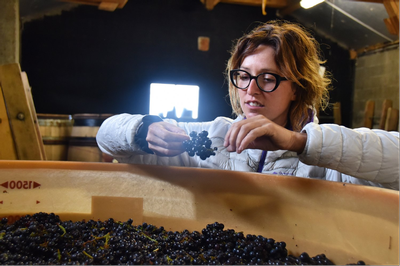
Anne-Sophie Dubois Fleurie Les Cocottes 2019
Anne-Sophie Dubois is one of our favorite producers in Beaujolais. Her bright, floral Fleurie, all clean lines and pillowy carbonic texture, with oodles of raspberry and strawberry, is perfect for the ubiquitous side of mashed sweet potatoes or roasted squash. Blend up some roasted squash with coconut milk and red curry paste for a delicious, spicy curried soup that makes a great starter.
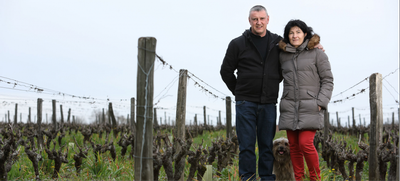
Francois Chidaine Touraine Gamay 2019
Chidaine, one of the most inspiring farmers in all of France, produces biodynamic Chenin blanc, Sauvignon blanc, and this Gamay from his no-till, carbon-sequestering vineyards in the Loire. This Gamay is spicier and denser than Dubois’s, with darker fruit and a touch of leafiness that reminds me of a Cabernet Franc from the region. Sausage and Gamay is a classic pairing, so pour this when the sausage and sage stuffing makes it to your plate.
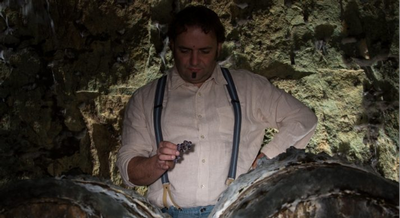
Domaine Sebastien David Hurluberlu Cabernet Franc 2019
Sebastien David’s funky, Coke bottle Cabernet Franc is perfect for anyone who enjoys stuffing version 2.0 - cornbread stuffing. The red and green capsicum notes of Loire Cabernet Franc pair beautifully with the southwest flavors of cornbread stuffing with roasted poblano chiles. The earthy spice and herbaceous tang will also elevate butter-roasted mushrooms with thyme and garlic.
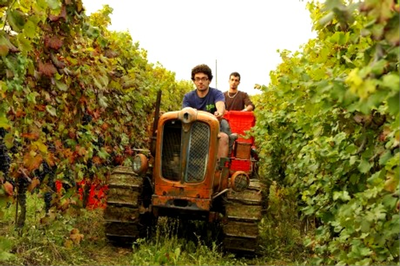
Poderi Cellario E Rosso! NV
Barbera is incredibly versatile on the table, and this bright, natural wine comes in a one Liter bottle, so you’ll have plenty to go around. Barbera’s friendly fruitiness and acidity are perfect for difficult pairings like bitter vegetables. I like to brighten the umami-laden Thanksgiving table with a bright, punchy, raw Tuscan kale salad. Just dress thinly chiffonade-ed kale with lemon juice and olive oil, leave it to marinate and tenderize for a few minutes, then toss with sharp pecorino or parmesan. Serve with pine nuts if you like, or just a second glass of Poderi Cellario Barbera. Extra credit - this wine is perfect if you’re one of those folks who has abandoned turkey altogether in favor of a standing rib roast.
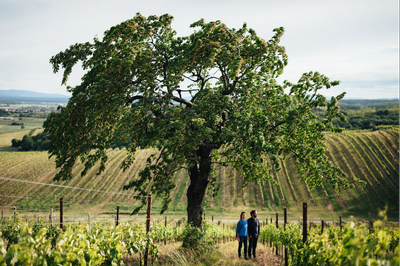
Weninger Blaufrankisch Kirchholz Alte Reben 2015
When in doubt, follow the number one rule of wine and food pairing - if it grows together, serve it together. This biodynamic Blaufrankisch (also known as Lemberger) from far eastern Austria is perfect with bacon-roasted brussels sprouts, roasted beets tossed with cumin seeds, and other eastern European flavors. It is dark and spicy, with cracked black pepper and blackberry coulis that make me think pork or game (maybe wild boar?), if you’re avoiding turkey.
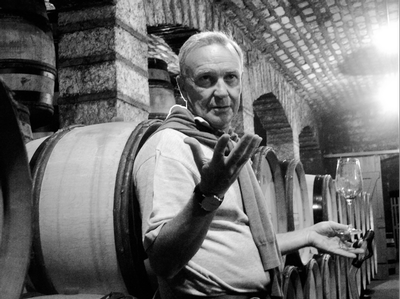
Francois Labet Bourgogne Rouge Vieilles Vignes 2016
Labet’s old vine bottling is an absolute steal, with pretty red fruit and classic Burgundian polish framed by sappy whole cluster tannins and turned earth, like someone in a fancy ball gown or tuxedo who also has calluses on their hands and dirt under their fingernails. The slight stemminess, combined with Burgundy’s affinity for mushrooms, makes this wine ideal for classic green bean casserole. I usually like to make my own mushroom gravy, but I will never sneer at mushroom soup or mix.
As mentioned, all of these wines are awesome with simple salt and pepper roasted turkey (consider spatchcocking it to help the white meat and dark meat cook at the same rate), or deep-fried turkey, or smoked turkey, or flamethrower scorched goose, or confit-ed wild grouse, or whatever fowl you are planning to serve. If you are still thirsty when pie is served, feel free to switch to one of our sticky dessert wines. Port or Banyuls are perfect for pumpkin pie, while Tokaij, sweet German Riesling, or Sauternes are great with orchard fruit desserts like apple pie or Bosc pears poached in white wine. Eat well, drink well, and please be safe this Thanksgiving season. Cheers!
ROCKIN' REDS FOR THE TURKEY TABLE 6-PACK, SHOP HERE

